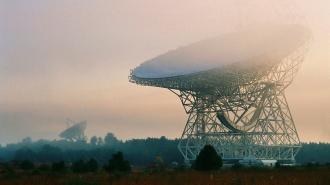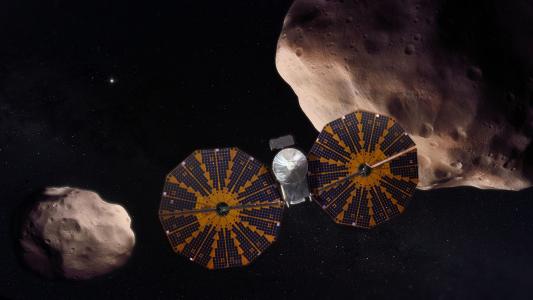Scientists have trained an AI to hunt for signs of alien technology in telescope data — and in its very first deployment, it identified eight promising signals that had been previously overlooked.
Spoiler alert: It doesn’t look like these signals actually came from aliens. But researchers say the ability of the AI to spot them marks a turning point in the search for extraterrestrial intelligence (SETI).
“It is a new era for SETI research that is opening up thanks to machine-learning technology,” Franck Marchis, a planetary astronomer at the SETI Institute, told Nature.
Alien tech: If extraterrestrial life exists in our galaxy, it could be limited to very simple single-celled organisms, or it may be as complex and intelligent as humans. In the latter case, such lifeforms may also be technologically advanced, and we may be able to detect signs of their technology in space.
These hypothetical signs are known as “technosignatures,” and SETI researchers speculate that they might take the form of radio signals that we could pick up using telescopes here on Earth.
Scaling up: SETI researchers have been hunting for technosignatures in telescope data since the 1960s, but most of the time, they haven’t had much data to sift through — projects might target just one or two stars at a time.
That changed in 2016, when Breakthrough Listen — a SETI project aiming to look for signs of radio waves or laser light emitting from 1 million stars — launched at UC Berkeley.
“Technosignature searches have been likened to looking for a needle in a cosmic haystack.”
Danny Price
Backed by $100 million in funding, it’s been able to secure thousands of hours of telescope time, and now that SETI researchers have an abundance of data, the challenge has shifted to getting it all analyzed — and the need to sift out Earth’s noise has made that extra complicated.
“Technosignature searches have been likened to looking for a needle in a cosmic haystack,” wrote Danny Price, a project scientist for Breakthrough Listen. “Radio telescopes produce huge volumes of data, and in it are huge amounts of interference from sources such as phones, WiFi, and satellites.”
“I only told my team after the paper’s publication that this all started as a high-school project.”
Peter Ma
AI assistant: When Peter Ma, a University of Toronto undergrad, was a senior in high school, he came up with the idea of applying an algorithm that combines two AI techniques — supervised learning and unsupervised learning — to the hunt for technosignatures.
Ma says the idea confused his high school teachers, but as a college student — with the help of SETI researchers at Breakthrough Listen, the SETI Institute, and others — he was able to develop and test the AI, in a study now published in Nature Astronomy.
“I only told my team after the paper’s publication that this all started as a high-school project that wasn’t really appreciated by my teachers,” said Ma.
How it works: After training Ma’s algorithm on examples of human-generated interference and artificial examples of what SETI researchers think alien signals might look like, the team used it to analyze 480 hours of observations on 820 stars.
This massive 150 TB dataset had been studied previously and was thought to contain no worthwhile signals, but the AI flagged about 20,000 possible technosignatures in it. After manually reviewing those, Ma’s team identified eight signals of interest from five different stars.
These eight signals stood out for two reasons, according to researcher Steve Croft, a project scientist for Breakthrough Listen.
“First, they are present when we look at the star and absent when we look away — as opposed to local interference, which is generally always present,” said Croft. “Second, the signals change in frequency over time in a way that makes them appear [to originate] far from the telescope.”
Unfortunately, these weren’t the alien signals we were hoping for — when the SETI researchers observed the stars again, they didn’t detect anything similar to the signals identified by the AI.
Looking ahead: While the new AI can make it easier to identify potential technosignatures, it’s possible we’re completely wrong about what these signals would look like. It’s also possible there’s nothing to find — we could be the only intelligent life in the universe, or the only ones broadcasting our location into space.
That isn’t going to stop SETI researchers from continuing the hunt, though — and with the help of AI, it should be easier for them to separate the (possible) alien signal from the noise.
We’d love to hear from you! If you have a comment about this article or if you have a tip for a future Freethink story, please email us at [email protected].




